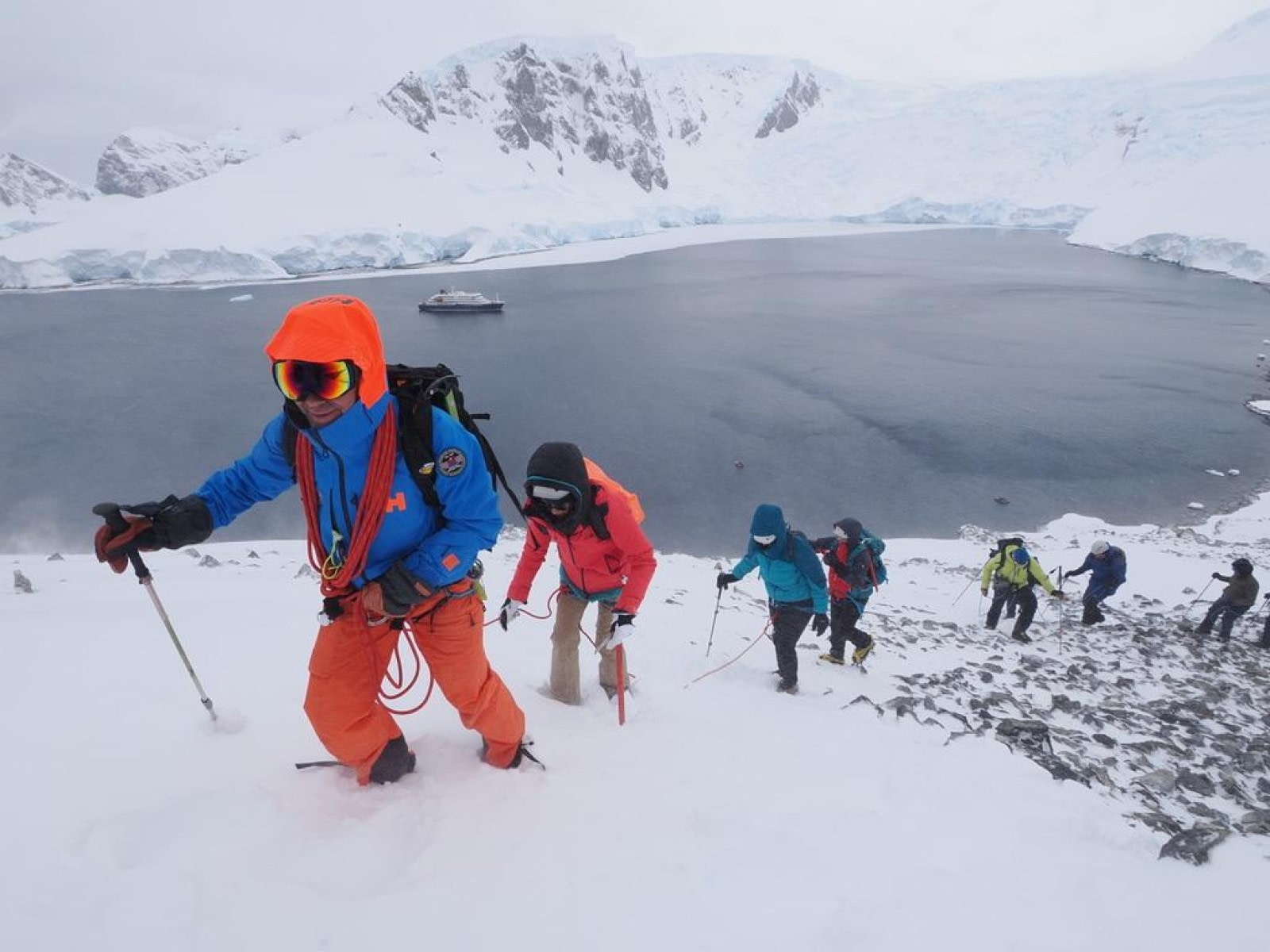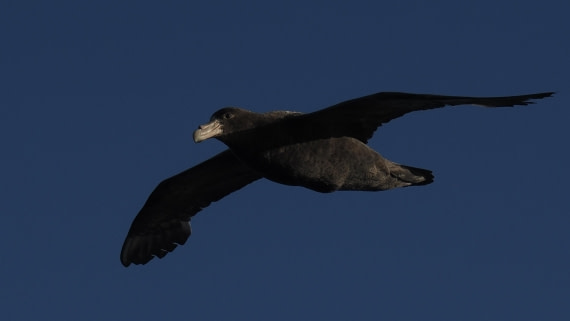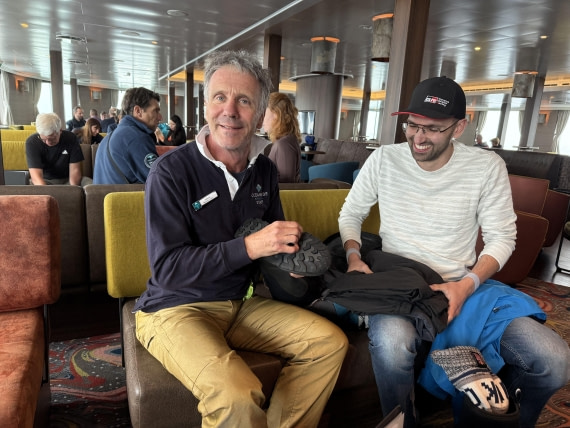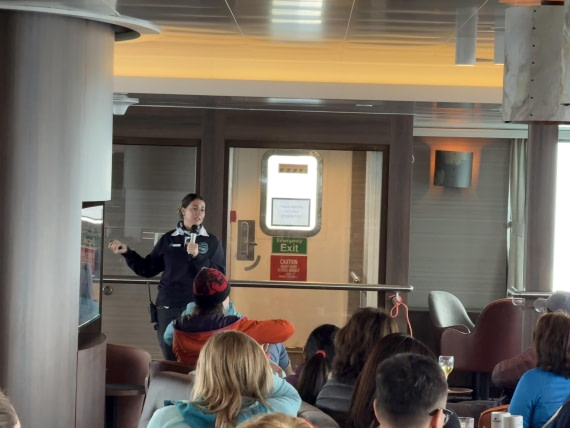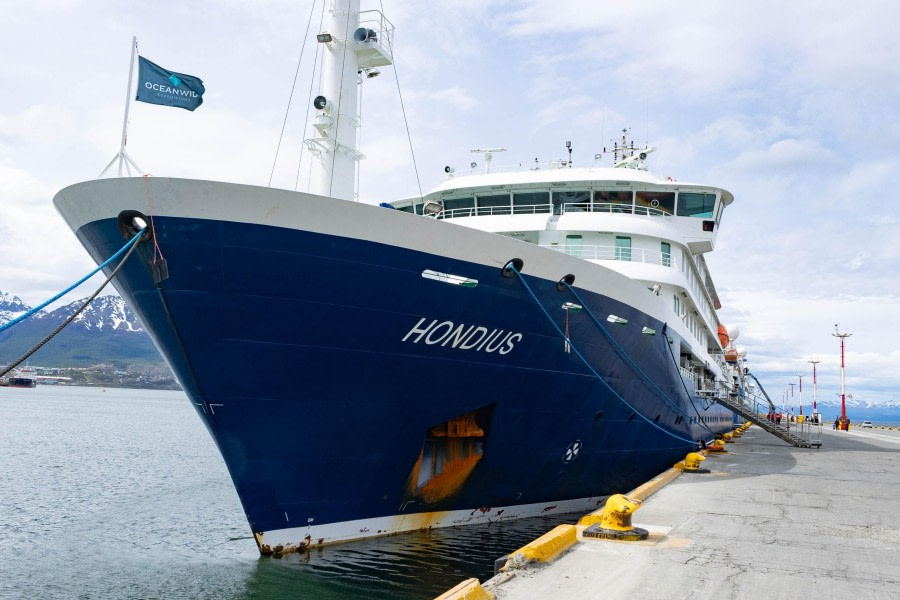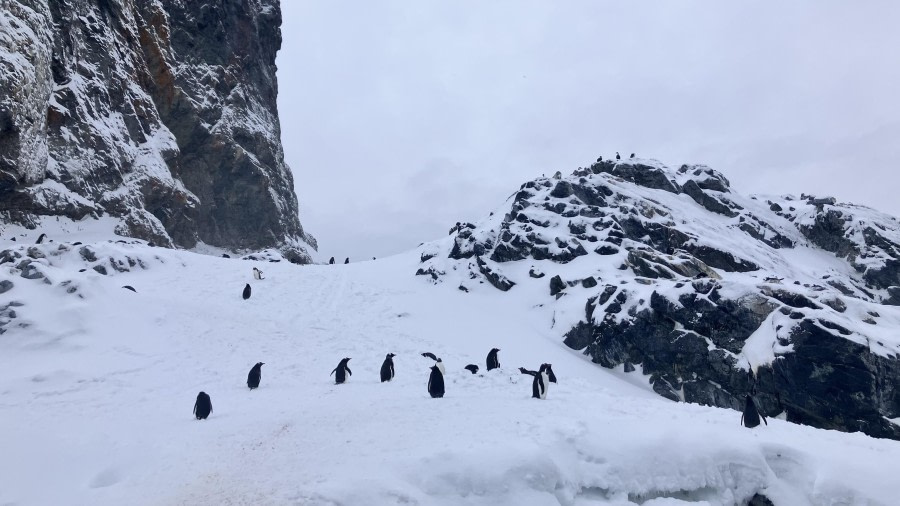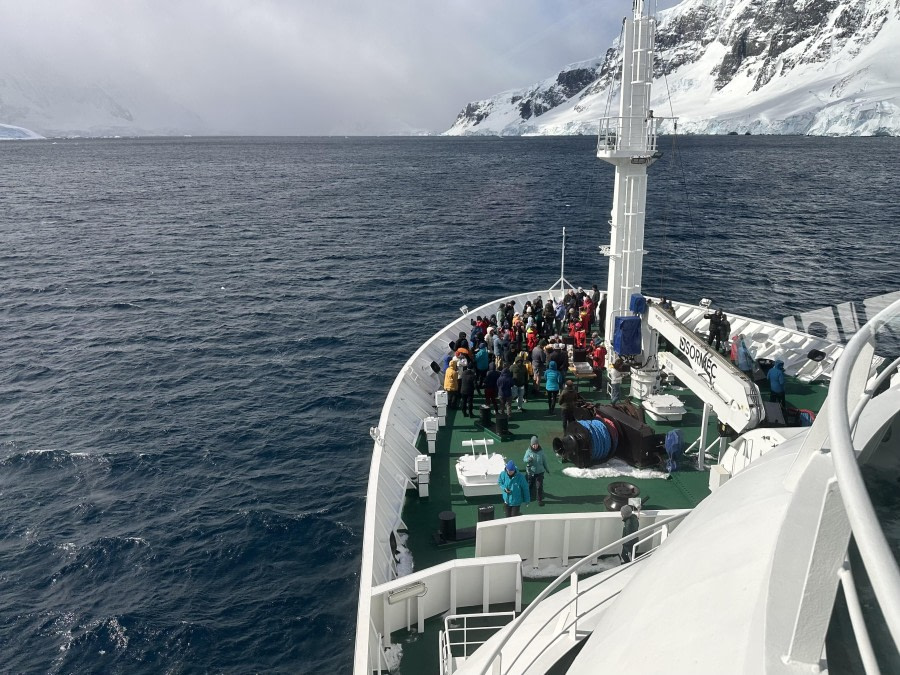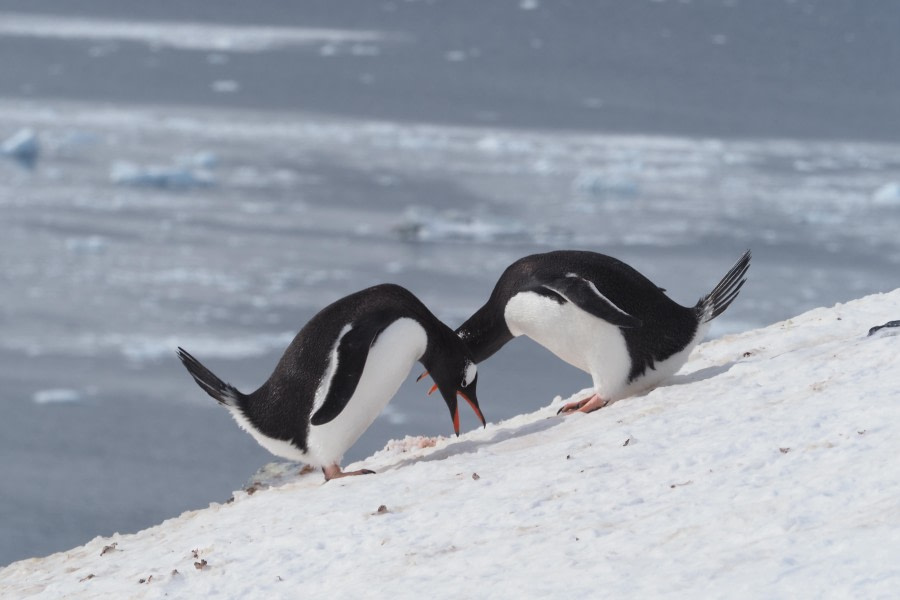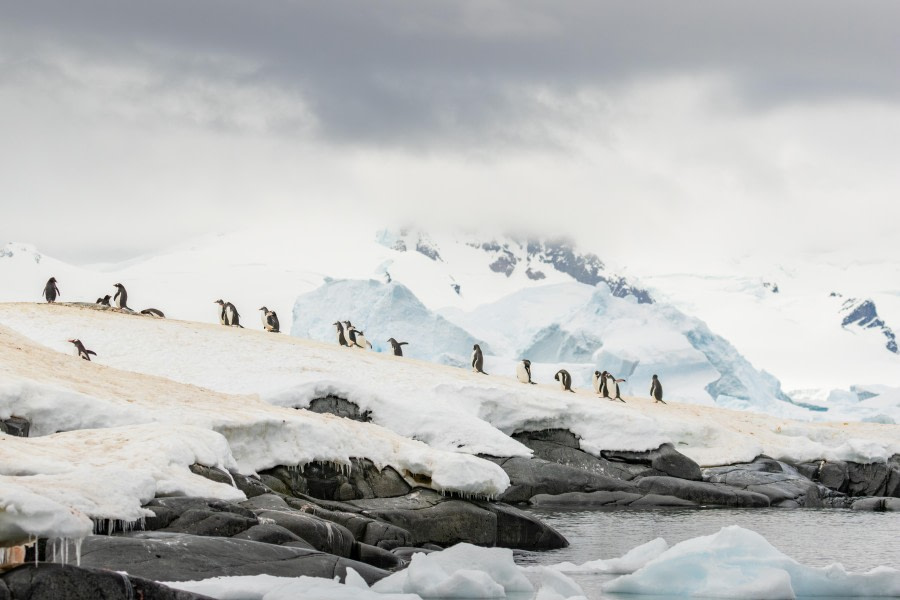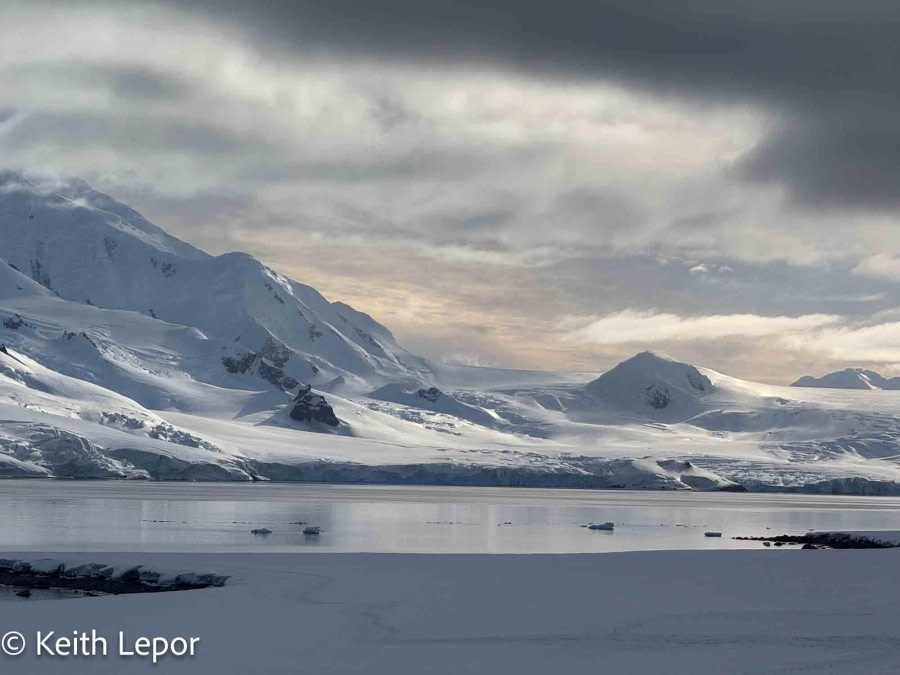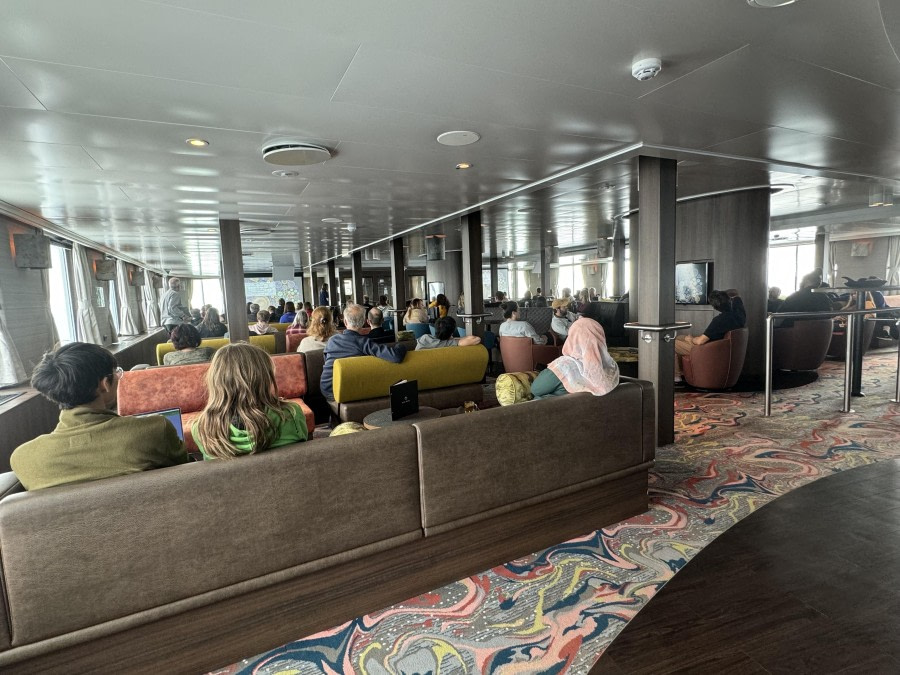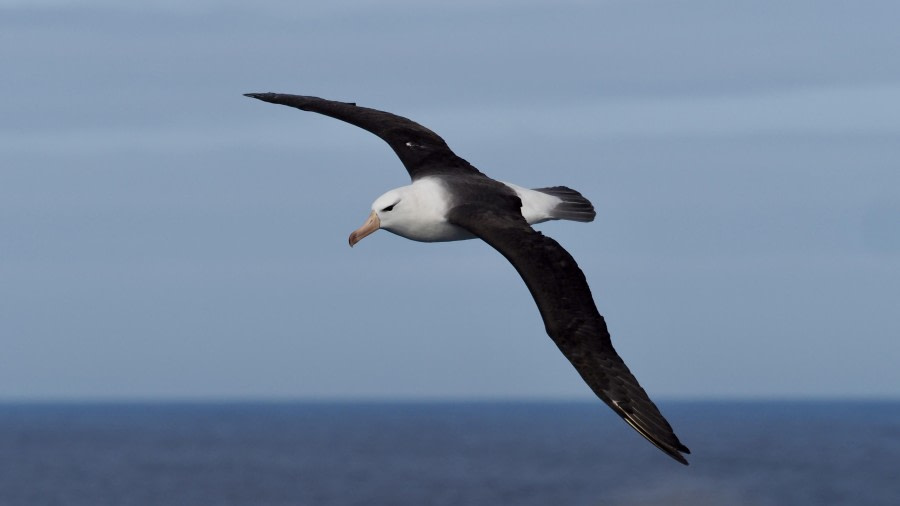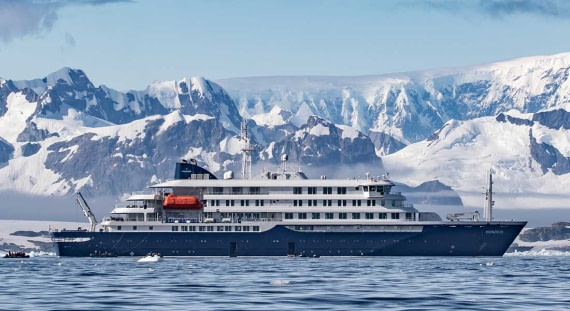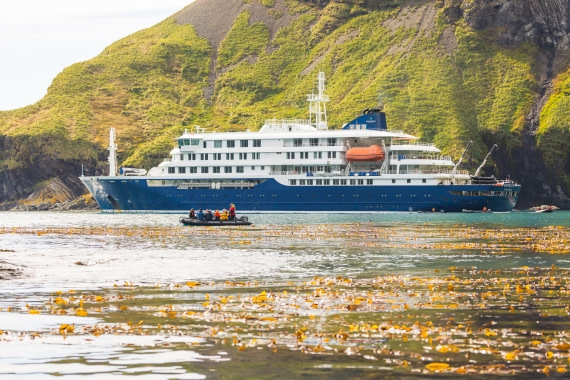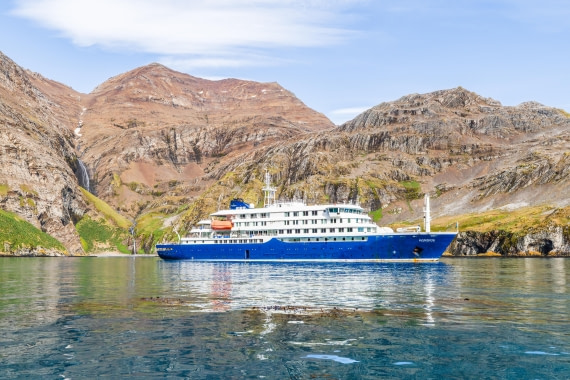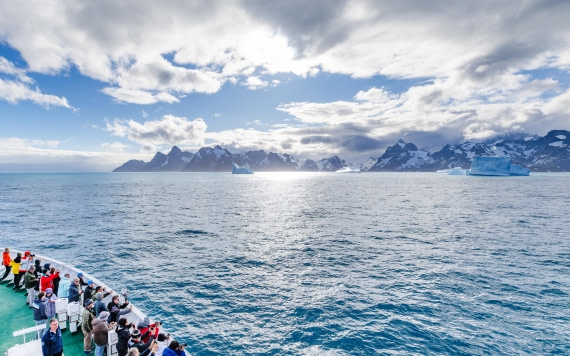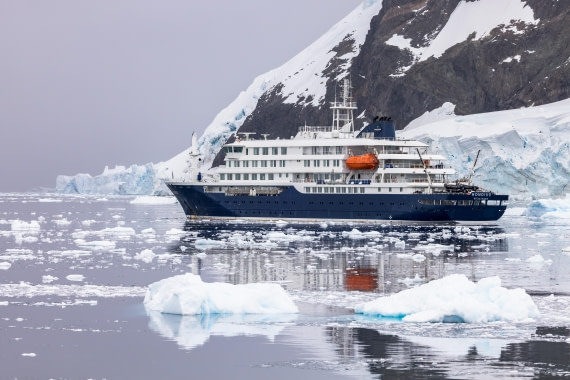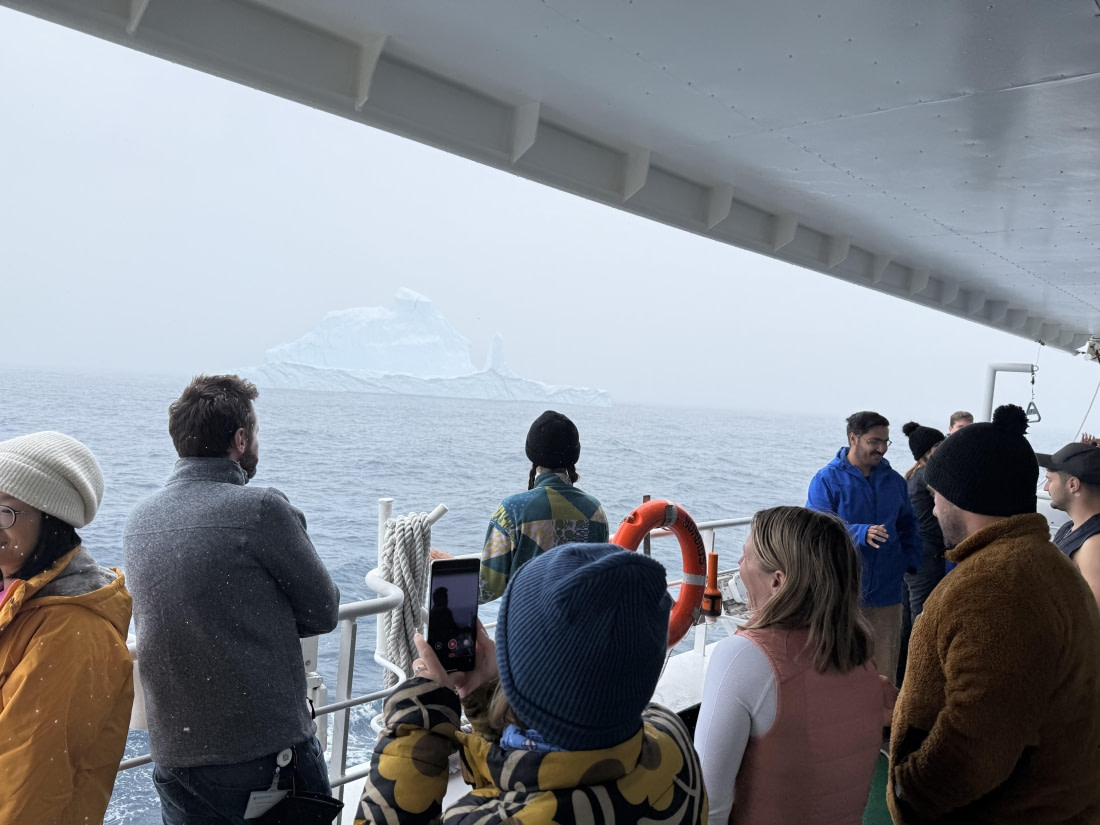| Date: |
07.11.2024 |
| Position: |
64°28.4’S / 062°54.4’W |
| Wind: |
SW2 |
| Weather: |
Overcast |
| Air Temperature: |
+5 |
In the pre-dawn hours, everything was shrouded in an eerie, deathly silence. At four in the morning, life on the ship’s lower decks began to stir. A crane on the aft of the fourth deck came to life. The crew deftly hooked a Zodiac and lowered it overboard. Two guides jumped in, and with a faint hum, the crane lowered the Zodiac onto the water. Three more Zodiacs followed shortly after.
On the coast, silent and shivering campers, like apparitions, waited for their ride. Once loaded into the Zodiacs, they set off for the ship in silence. They still had a few hours to warm up and get ready for a long, adventure-filled day!
Morning gradually took its hold. The shy sun, before bathing the surroundings in its dazzling light, first painted the peaks of the snow-white mountains with a golden hue. Then, gaining confidence, it rose from the horizon, chasing away the remnants of the night. Day had arrived. Chris Long, our Expedition Leader, standing on the bridge, pressed the intercom button at exactly 6:45 AM, wishing everyone a good morning. He casually mentioned that today’s activities would be exciting, even if things had not gone according to the initial plan. But then again, that is what an expedition is all about—plans are subject to change. After breakfast, a Zodiac cruise was scheduled. The weather was perfect—sunshine, no wind, icebergs everywhere—a true spectacle. We gathered near the Zodiac boarding area, bundled in every warm piece of clothing we had, and began boarding in small groups of ten to explore the surroundings.
Our guides expertly navigated the Zodiacs among the small icebergs, while we gazed in awe at this strange, unfamiliar frozen world. It was a landscape of endless shades of blue, covered in pristine white snow. Sometimes, groups of penguins darted past us, swimming in one direction. We kept a respectful distance, not wanting to disturb them. The sharp-eyed among us spotted tiny orange creatures in the water—the famous Antarctic krill. The luckier ones caught glimpses of the sleek dorsal fin of a minke whale darting among the ice floes. And the most fortunate even managed to witness a humpback whale. It flapped its tail a few times and swam off, leaving us with unforgettable memories.
Time flew by, and soon it was time to return to the ship, where lunch awaited. A brief break did everyone good, allowing those who were chilled to the bone to warm up with hot chocolate and a hearty meal. Meanwhile, the Hondius had approached the Melchior Islands closely. After lunch, we planned to explore the area again by Zodiac, except for the mountaineers among us. They landed on one of the islands, strapped on snowshoes, and set off to conquer the peak. The rest of us resumed our Zodiac adventure, scanning the surroundings once more. Somewhere in the distance, a humpback whale’s tail surfaced again, and we paused, entranced by this magnificent creature. The whale surfaced periodically, sending fountains of spray into the air before diving back down, flaunting its fluke.
We navigated through narrow channels between the islands. Here and there, we spotted gentoo penguins and Antarctic shags. One of the channels was locked in ice, where several Weddell seals had sprawled out. Some were dozing, while others periodically lifted their heads, eyeing us with skeptical curiosity. We didn’t linger, respecting their space, and continued. Before we knew it, it was time to head back to the ship. After the daily recap by Chris, the microphone was handed to William, our hotel manager, who announced that tonight’s dinner would not be in the usual restaurant but out on the open deck. It was BBQ night. We bundled up again and stepped out onto the deck, where benches had already been set up. Music played, and the chefs and officers grilled meat over an open flame, while waiters cheerfully poured complimentary mulled wine into our cups. This unfolded against the breathtaking backdrop of Antarctic nature. After dinner, when the tables were cleared, we, filled with joy and excitement, danced the night away. While some of us swayed to the rhythm of the music, others were preparing for a more serious endeavor: camping. The Zodiacs were launched again, and the shell door opened once more. Campers, wrapped in warm clothing and lugging large bags filled with camping gear, boarded the boats and ventured into the icy unknown. The sun touched the horizon and soon disappeared, casting a final golden glow on the mountain peaks. The air temperature dropped rapidly, but the brave campers were undeterred. Until tomorrow, friends!
On a beautiful morning south of the Melchior Islands, the group kayaked through glassy waters, surrounded by towering glaciers and soft morning light. As they journeyed through the Schollaert Channel, they navigated crackling brash ice and moved in unison, embracing the quiet serenity of the landscape. Upon reaching Kappa Island, the group was greeted by a minke whale breaching close to their kayaks, sparking a renewed sense of adventure. They explored the icy coastline, weaving between massive icebergs, and paused for a moment of silence on the open water. As they returned to the Zodiac, the sudden roar of an iceberg calving reminded them of nature's power and the need for constant awareness in such a wild, unpredictable environment.
In the morning, we landed at Dalman Bay on Anvers Island under perfect conditions—no wind and clear skies, ideal for basic mountaineering. The group was fit, and we adjusted our pick-up point after spotting two Weddell seals on the previous landing, moving to the other side. In the afternoon, we headed to Melchior Island for a shorter, more relaxed climb, perfect for the slower members of the group. The weather remained stunning with Grand Beau conditions, making for a beautiful and successful trip all around.
Camping 07 NOV Melchior Islands
Wind: N 1 Temperature: -3 C
64 18.6 S 063.02.6 W
After the amazing Barbecue, 60 happy campers spent the night in a million-star Hotel! We slept with the sky as our roof. Melchior Islands will be our camping site for the night. We arrived at our landing site, wondering how we would be sleeping on this amazing continent in a Bivi bag. Anthonie, Saskia and Valeria were waiting for us in our “home” for the night. We first started digging some snow pits to have some shelter in case of winds. After that we put our Bivi bag, mattress, and sleeping bag in our pits and made our beds. The sunset (midnight) was amazing! Beautiful colors appeared on the horizon. Some laughing and a lot of pictures after, we fall asleep one by one, and the campers began to fall silent. In the middle of the night a curious group of penguins came to briefly say hi. This experience became more special every minute. At 3:45 in the morning the wakeup call was different, we woke up with an incredibly special pink sunrise and we started to cover all the pits that we made during the night. Yes! We must maintain this amazing place pristine. Our Zodiacs started to arrive at the landing site, between smiles and sleepy faces we wrapped our gear and returned to the ship. Hot drinks and delicious pastries were waiting for us onboard Hondius. This night we will remember forever for life.
